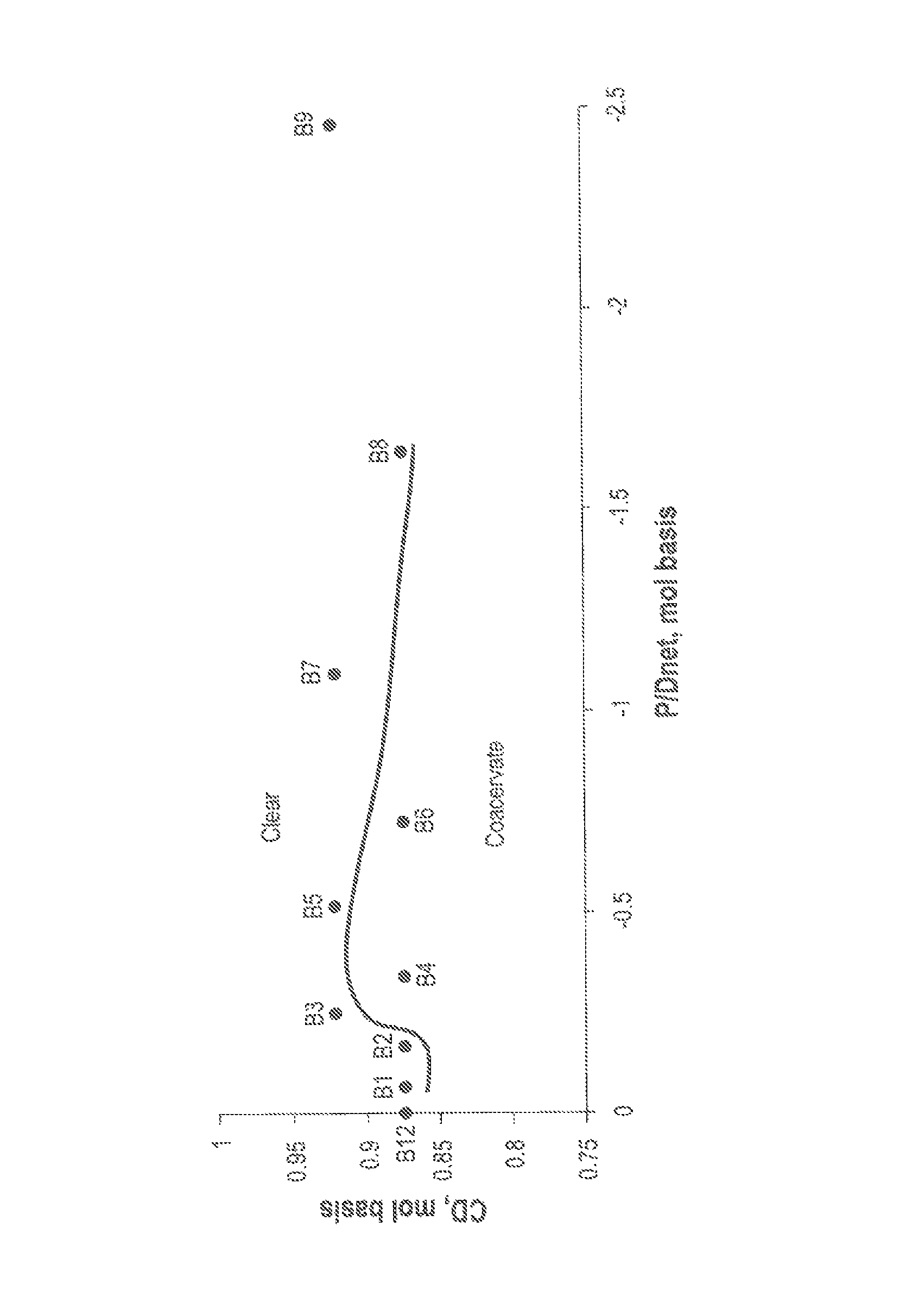Anionic micelles with cationic polymeric counterions methods thereof
a technology of cationic polymer and micelles, applied in the field of polymermicelle complexes, can solve the problems of increasing the regulation of volatile organic solvents, undesirable addition of simple electrolytes into many formulations, and inefficient packing,
- Summary
- Abstract
- Description
- Claims
- Application Information
AI Technical Summary
Problems solved by technology
Method used
Image
Examples
example 1
Ready to Use Cleaner with Sodium Hypochlorite
[0113]A series of formulations at various P / Dnet values were prepared for visual evaluation of phase stability, followed by measurement of the Z-average diameters of the aggregates formed via dynamic light scattering. The formulations are useful as hard surface cleaners, for example for bathroom surfaces or kitchen counters, that are stained by mold or mildew or with tenacious food residues that require the cleaning action of surfactants combined with the stain removal benefits provided by sodium hypochlorite bleach. A control formulation comprising mixed micelles of net anionic charge without the presence of poly(DADMAC) as the polymeric counterion was also made. The formulations, were made by simple mixing of appropriate volumes of aqueous stock solutions of the surfactants, polymer, the sodium carbonate (which provides significant buffer capacity and which keeps the pH of the final formulations within a desirable range), and a source o...
example 2
Formulations with Sodium Hypochlorite Adjustment of Mixed Micelle Compositions
[0123]In this example, formulations comprising mixed micelles of a nonionic amine oxide surfactant and an anionically charged surfactant and poly(DADMAC) as the cationic polymeric counterion, in combination with the oxidant sodium hypochlorite, which exhibit excellent wetting and stain removal performance are provided.
[0124]The formulations in this example have a fixed total surfactant+polymer concentration, carbonate buffer, and bleach concentration, and cover a wide range of the absolute value of P / Dnet. As described above, the formulations of the instant invention are free of coacervates and precipitates. That said, formulations that are relatively nearer to a coacervate phase boundary may be preferred due to their relatively faster rates of spreading on both polar and non-polar surfaces, which also results in more rapid stain removal by the oxidant.
[0125]Aqueous formulations were prepared by mixing app...
example 3
Concentrates Suitable for Dilution
[0133]The instant invention can also provide products that are prepared as concentrates which are diluted upon, use. Since the formation of a coacervate phase is undesirable for the reasons cited above, optimization of the formulations such that coacervates are not present in both the concentrate and at the level of dilution, desired may be an important characteristic to provide. The optimization is achieved by creating a series of samples, varying the absolute value of P / Dnet via varying the concentration of the polymeric counterion at a fixed mixed micelle composition, carbonate buffer, and bleach concentration until a formulation which is free of coacervates at the desired dilution is identified. As will be readily apparent, compositions which are free of coacervate are not directly indicated by the absolute value of the P / Dnet parameter. This parameter may be modulated as described herein, and while a specific threshold value may not correspond ...
PUM
 Login to view more
Login to view more Abstract
Description
Claims
Application Information
 Login to view more
Login to view more - R&D Engineer
- R&D Manager
- IP Professional
- Industry Leading Data Capabilities
- Powerful AI technology
- Patent DNA Extraction
Browse by: Latest US Patents, China's latest patents, Technical Efficacy Thesaurus, Application Domain, Technology Topic.
© 2024 PatSnap. All rights reserved.Legal|Privacy policy|Modern Slavery Act Transparency Statement|Sitemap

